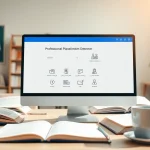Understanding Anxiety: What It Is and How It Affects Us
Anxiety is a normal human emotion that everyone experiences at different points in their lives. However, for some, it can become overwhelming and debilitating. When anxiety is persistent and impairs daily functioning, it might indicate an anxiety disorder. Understanding anxiety involves exploring its underlying mechanisms, symptoms, and various types. To effectively work towards dealing with anxiety, we must first comprehend what it truly is.
The Science Behind Anxiety Disorders
Anxiety disorders are a group of mental health conditions characterized by excessive fear or worry. According to the National Institute of Mental Health (NIMH), anxiety disorders affect approximately 19% of adults in the U.S. Each disorder comes with its unique set of symptoms but is fundamentally rooted in the body’s natural “fight or flight” response. When faced with danger, the body releases adrenaline, which prepares individuals to respond to threats. However, in anxiety disorders, this response can be triggered inappropriately, leading to excessive feelings of fear and panic.
Common Symptoms of Anxiety
Anxiety manifests in various ways, and the symptoms can vary from person to person. Common symptoms include:
- Persistent worrying or obsessive thoughts
- Restlessness or feeling on edge
- Fatigue and difficulty concentrating
- Muscle tension
- Sleep disturbances, including insomnia or excessive sleep
- Physical symptoms such as rapid heartbeat or sweating
Understanding these symptoms is crucial for recognizing when anxiety may be affecting you or someone you care about.
Different Types of Anxiety Disorders
Anxiety disorders can be categorized into several types, including:
- Generalized Anxiety Disorder (GAD): Characterized by chronic worry about various aspects of life, such as health, finances, and relationships.
- Panic Disorder: Involves recurrent panic attacks, which are sudden periods of intense fear or discomfort.
- Social Anxiety Disorder: A fear of social situations that can lead to significant distress and avoidance of social interactions.
- Specific Phobias: An intense and irrational fear of specific objects or situations, such as heights or spiders.
- Obsessive-Compulsive Disorder (OCD): Involves unwanted, intrusive thoughts (obsessions) and repetitive behaviors (compulsions).
Each type of anxiety disorder presents unique challenges and requires tailored approaches to management and treatment.
Practical Strategies for Dealing with Anxiety
While understanding anxiety is essential, implementing effective strategies to manage it is equally important. Here are practical ways to deal with anxiety on a daily basis.
Daily Habits to Reduce Anxiety Levels
Incorporating healthy routines into your daily life can dramatically reduce anxiety. Here are some habits to consider:
- Maintain a Regular Sleep Schedule: Sleep is vital for emotional regulation. Strive for 7 to 9 hours of quality sleep each night.
- Stay Hydrated and Eat Nutritious Foods: A balanced diet can influence mood and energy levels. Consider reducing caffeine and sugar intake.
- Limit Screen Time: Excessive screen time, especially on social media, can heighten feelings of inadequacy and anxiety.
- Practice Gratitude: Reflecting on what you’re thankful for can shift focus from anxious thoughts to positive experiences.
Mindfulness and Relaxation Techniques
Mindfulness can be a powerful tool for reducing anxiety. Here are several techniques:
- Mindful Breathing: Taking deep, intentional breaths can help ground you in the present moment. This slows your heart rate and calms racing thoughts.
- Meditation: Regular meditation practice can create awareness of your thoughts and feelings, providing space for reflection and clarity.
- Progressive Muscle Relaxation: This technique involves tensing and then relaxing each muscle group in sequence, promoting overall relaxation.
- Yoga: Combining physical movement with breath control enhances mindfulness and reduces stress.
The Role of Exercise in Managing Anxiety
Regular physical activity is one of the most effective ways to combat anxiety. Exercise increases the production of endorphins, chemicals in the brain that act as natural painkillers and mood elevators. Here are some key points about how exercise helps:
- Releases Tension: Physical activity helps release built-up tension and stress, which can otherwise contribute to heightened anxiety.
- Improves Sleep: Regular exercise can help you fall asleep faster and deepens sleep. Better sleep reduces anxiety symptoms.
- Boosts Self-esteem: Achieving fitness goals—whether running or lifting weights—can enhance self-esteem, leading to decreased anxiety.
Professional Help for Dealing with Anxiety
While self-help strategies can be effective, sometimes professional intervention is necessary. Understanding the options available can empower individuals to seek the help they need.
Cognitive Behavioral Therapy (CBT) Explained
Cognitive Behavioral Therapy is a widely used form of psychotherapy that helps individuals recognize negative thought patterns and replace them with healthier ones. CBT is especially effective for anxiety disorders. Key components include:
- Identifying Triggers: CBT helps patients pinpoint specific situations that provoke anxiety, creating a foundation for confronting those fears.
- Cognitive Restructuring: This involves challenging and rethinking irrational beliefs that contribute to anxiety, fostering a more realistic outlook.
- Exposure Therapy: Gradually exposing individuals to their fears in a controlled setting can diminish their anxiety over time.
Medication Options: What You Need to Know
For some individuals, medication may be necessary to manage anxiety symptoms effectively. Common medication options include:
- Antidepressants: SSRIs (Selective Serotonin Reuptake Inhibitors) are commonly prescribed to help regulate mood and anxiety levels.
- Benzodiazepines: These are fast-acting anti-anxiety medications that can be helpful for immediate anxiety relief but are typically prescribed only for short-term use due to risk of dependence.
- Buspirone: This is a non-benzodiazepine medication that treats chronic anxiety without the sedating effects of benzodiazepines.
Consulting with a healthcare professional is crucial to determine the best approach and dosage for individual needs.
When to Seek Professional Help
While self-help can be beneficial, it is vital to recognize when professional help is warranted. Signs that indicate it’s time to seek help include:
- When anxiety significantly affects daily life, relationships, or work performance.
- If you experience recurring panic attacks or overwhelming fear.
- When anxiety is coupled with depression or other mental health issues.
- If self-help strategies fail to alleviate symptoms after a sustained effort.
Reaching out for help is a courageous step that can yield significant improvements in well-being.
Supporting Others in Dealing with Anxiety
Supporting friends or family members dealing with anxiety can be an essential aspect of their recovery journey. Understanding how to provide effective support is key.
How to Recognize Anxiety in Friends and Family
Recognizing the signs of anxiety in others can help you offer the right support. Common signs include:
- Changes in behavior, such as withdrawal from social situations
- Frequent complaints about physical symptoms without a medical cause
- Excessive worry about day-to-day events or situations
Being aware of these signs allows you to approach the individual with empathy and understanding.
Effective Communication Techniques
When someone you care about is struggling with anxiety, communication plays an essential role. Here are strategies for effective communication:
- Practice active listening: Give them space to share their feelings without interruption.
- Avoid minimizing their experiences: Reassure them that what they’re feeling is valid.
- Encourage them to seek help: Offer to assist in finding resources or accompanying them to appointments.
Resources for Anxiety Support
Supporting someone with anxiety may require utilizing available resources. Consider recommending:
- Support Groups: Local or online support groups provide a platform for individuals to share experiences and coping strategies.
- Professional Help: Referring them to a mental health professional can be instrumental in their journey towards recovery.
- Self-Help Resources: Books, apps, and online articles can provide additional support and strategies.
Long-Term Strategies to Stay Anxiety-Free
Cultivating long-term strategies for managing anxiety is pivotal in preventing relapse. Incorporating resilience-building techniques can help sustain improvements in mental health.
Building Resilience Against Anxiety
Resilience is the psychological strength that enables individuals to cope with stress and bounce back from adversity. Building resilience can involve:
- Developing a Strong Support Network: Healthy relationships provide emotional support and foster connection.
- Practicing Self-care: Engaging in hobbies, relaxation, and fun activities can enhance overall well-being.
- Setting Realistic Goals: Break goals into manageable steps to avoid feelings of overwhelm.
The Importance of Community and Support Groups
Connecting with others facing similar challenges can create a sense of community that fosters healing. Support groups offer a safe space to share experiences and strategies. These connections can motivate individuals to continue their recovery journey and remind them they are not alone in their struggles.
Tracking Progress: Tools for Managing Anxiety
Tracking your mental health journey can provide insight into patterns and triggers. Consider the following tools:
- Journals: Regularly documenting thoughts and feelings can help identify triggers and coping strategies.
- Mood-tracking Apps: These can help monitor anxiety levels and provide valuable data for future discussions with a therapist.
- Self-assessment Questionnaires: Utilize anxiety assessment tools to evaluate progress and areas that may still require attention.
Understanding your progress can encourage and motivate you to continue employing effective strategies for anxiety management.


